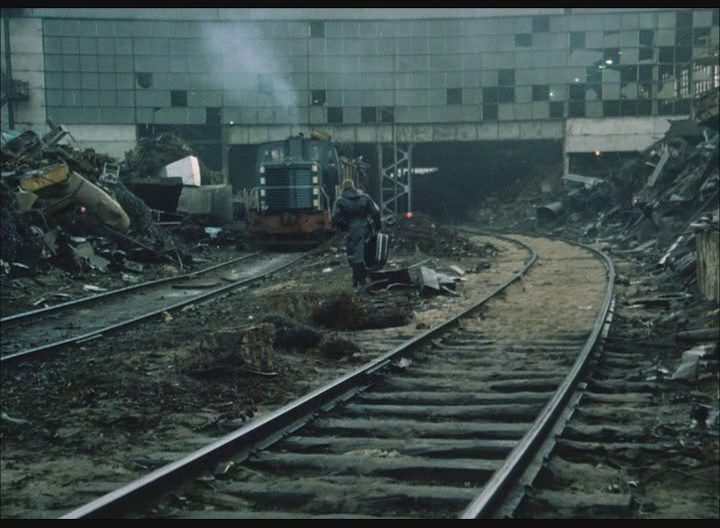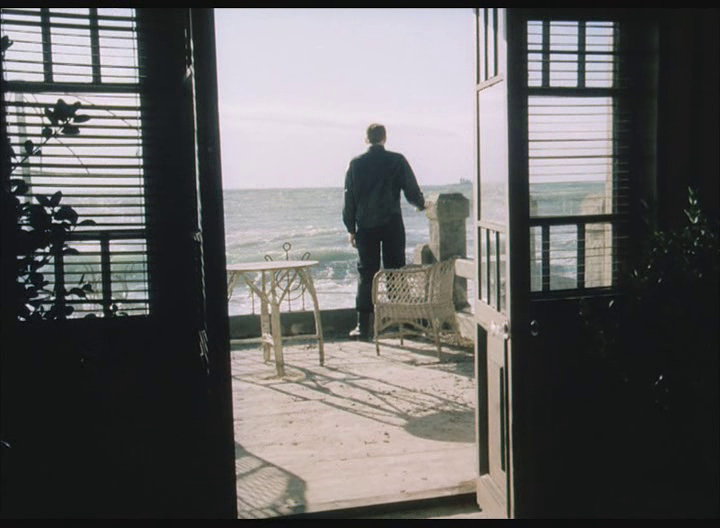
Yesterday I came across an interesting Soviet film. One that was apocalyptic and creative in its approach. It felt like what I wanted Stalker to actually be like. I mentioned how the director had worked alongside Tarkovsky in the film, and that there were quite a few similarities between the two. I couldn't help but find myself curious as to what else the director had made, craving more Soviet era films of nuclear wastelands and catastrophic environments. It came as a surprise to me that this director had in fact made several films of this nature, actually known for creating a series of films known for apocalyptic themes. To me, this was surprising given the strong arm of the Soviet Union at the time when it came to media. There were many limitations as to what could be said and how; many Soviet era directors even fled to Europe or the west to pursue more free careers once establishing a bit of fame. But even so, there's something about these more dystopian, end of the world type Soviet films that I just can't help but love. The incredibly rustic, industrial look of them on old 16mm or 35mm film stock. The blatant decline in industry visible and clearly met with certain themes of despair and connected to the story somehow. And, of course, with all of this, sprinkled in are basic empathy and humanity regarding the subjects. Reminding us that citizens are not enemies, no matter how much the elites or governments imply otherwise. To see these sorts of fools from what one would have called the enemy fascinates me.
But outside of this, it really is the hard industrial and gritty look of these films that pulls me in. Often featuring characters and stories in which everyday normal citizens are stumbling through the debris of a former glorious era. There's something so powerful in this captured into film, the realisation of what was for them a great, unstoppable era and force, only to be crumbling around them, beneath their feet. How does one come to terms with this? After decades of intense programming to turn citizens into patriotic, industry loving hardworkers? To witness the decline of all that has been built in such rapid time. A Visitor to a Museum came out just one year into the collapse of the Soviet Union, and already so much had taken place. I can't imagine the fear, despair, and the sheer panic of citizens as they lost their jobs, their homes and belongings, and even their loved ones due to these struggles. For citizens of the Soviet Union, this would've been much like watching the fall of Rome to them. I mention these comparisons and context due to the assumption that I had from watching A Visitor to a Museum. Admittedly I didn't quite get the story, but I noticed themes that certainly did tell me something still.

The assumption I had from watching this film was that the world had already experienced a horrific event, perhaps not nuclear war this time, that had destroyed much of civilisation. Though some aspects of life has remained, and humanity continues on in some regard. Though with this, times appear to be changing, and nobody seems to really be aware of these changes or cares that it's taking place. Scenes of television fashion shows showing men in heels and music can be seen. There's a remark that the world of fashion is changing. For a Soviet era film, seeing this really surprised me. Not only had it managed to get through censors, but it also spoke of the upcoming changes the Soviet Union was to experience. A total way of life being turned upside down, with a new norm suddenly placed into existence without even an attempt at rebuilding. This feeling of despair must've been felt as the USSR collapsed, the realisation that nothing could be done, and everyone could only sit and remain idle. Sprinkled in is the idea of a degenerate. Often people with mental health problems or deformities. These stand out from the rest, and again to me it seemed as if it was a metaphor for the undesirable outcome that arrives from a lost society. At a glance it seems like these degenerates are called such just as a result of dated times. To some degree, with the Soviet Union and its institutions, this may be true. But it's easy to forget their hatred for such practices at the same time. This conflict between what's good for society and what isn't, what should be seen and what shouldn't. It makes its way into the story through them.
Though if you are not seemingly pulling at strings in attempt to make sense of A Visitor to a Museum, then you're likely to watch the entire film and be confused. Not sure what anything meant or really what happened. Even if you devote your full attention to the screen and try your best to follow the story and its characters, it's likely to leave you confused and without direction. Thinking you know what it all meant at one moment, only to feel utterly lost again the next. Funnily, I suggested this film to the person that suggested Dead Man's Letters to me. I told them of my problems understanding the film. They got back to me a few hours later, only to say the very same thing back to me. Even down to the ideas over its themes. Lost, confused, and with assumptions that it had connection to the collapse of the Soviet Union. We talked a little and tried to share our thoughts and analyse certain aspects of the film, but eventually came to the agreement that we knew nothing and were ultimately just speculuating and pulling at strings. Usually I don't mind films like these, but I have to admit that much of it was almost nightmare fuel. It really made me feel not just confused, but quite uncomfortable. I'm sure this was the intent, however, so I can't really claim that's a negative.
Despite the really weird story that's a bit hard to understand, the film has a lot of very beautiful cinematography. The aspect ratio is quite square, making the whole film rather enclosed, not really claustrophobic though. I really like films like this which utilise this sort of aspect ratio. It allows the frame to feel more centred, to which the depth of the scene is often important. Focusing on the foreground and background and letting the viewer use their eyes to look into both for context. Whether it's seeing what is going on in the background, using symmetry in how the characters interact in that space. To no surprise, it was shot on film stock, which makes these compositions even more beautiful. Film grain and gentle highlights add to the atmosphere and (assumed) metaphors for life and faith. But I couldn't help but feel much of the beautiful cinematography came too soon, and the rest of the film lost its spark. It's very different to Dead Man's Letters, which had plenty of creative directing throughout. Worth a watch? Probably not.

Hello @namiks that your friend and you have had the same experience of confusion and collapse before the film, it seems to me that this was the intention of the director.
It impresses me when they achieve that, not only their intention to tell something with their narrative, but also to reach us and our moods through their professional resources.
Interesting option, thanks for recommending and for the warnings too.